When it comes to plumbing, there are two common types of traps used for kitchen sinks: P traps and S traps. These traps are essential for preventing sewer gases from entering the home and keeping the sink drain clear. But what exactly are P traps and S traps, and how do they differ? The P trap, also known as a sink trap, is a type of plumbing trap that creates a water seal to prevent sewer gases from entering the home. It is named for its shape, which resembles the letter P when viewed from the side. The trap is typically made of PVC or metal and is located under the sink, connecting the drain pipe to the main sewer line. On the other hand, the S trap, also known as an S bend, is shaped like the letter S and is used to create a water seal in the same way as the P trap. The S trap is usually made of PVC or metal and is also located under the sink, connecting the drain pipe to the main sewer line.What is a P Trap and What is an S Trap?
When it comes to choosing between a P trap and an S trap for your kitchen sink, there are a few factors to consider. One of the main differences between the two traps is their installation. P traps are designed to be installed horizontally, while S traps can be installed both horizontally and vertically. Another factor to consider is the space available under your sink. P traps require more space due to their curved shape, while S traps can fit into tighter spaces. Additionally, some building codes may dictate which trap is required for your specific location. Ultimately, the decision between a P trap and an S trap may come down to personal preference and what is most suitable for your plumbing system and space restrictions.How to Choose Between a P Trap and an S Trap
Installing a P trap for your kitchen sink is a relatively straightforward process that can be done by a homeowner with some basic plumbing knowledge. The first step is to remove the old trap, if there is one, by unscrewing the connections and carefully removing the trap from the drain pipe and the sink drain. Next, you will need to measure and cut a new piece of PVC pipe to fit between the drain pipe and the sink drain, leaving enough room for the P trap to fit in between. Then, using PVC primer and cement, attach the new pipe and the P trap to the existing drain pipe and sink drain. Finally, tighten all connections and make sure the P trap is securely in place.Installing a P Trap for a Kitchen Sink
The process for installing an S trap for a kitchen sink is similar to that of a P trap. The first step is to remove the old trap, if there is one, by unscrewing the connections and carefully removing the trap from the drain pipe and the sink drain. Next, you will need to measure and cut a new piece of PVC pipe to fit between the drain pipe and the sink drain, leaving enough room for the S trap to fit in between. Then, using PVC primer and cement, attach the new pipe and the S trap to the existing drain pipe and sink drain. Finally, tighten all connections and make sure the S trap is securely in place.Installing an S Trap for a Kitchen Sink
When it comes to P traps and S traps, there is no definitive answer as to which is better for a kitchen sink. Both traps serve the same purpose and are equally effective in preventing sewer gases from entering the home. The choice between the two ultimately depends on personal preference, available space, and local building codes. It is worth noting that S traps may be more prone to clogging, as debris can get caught in the bend of the trap. However, regular maintenance and cleaning can help prevent this issue.P Trap vs S Trap: Which is Better for a Kitchen Sink?
Like any plumbing fixture, P traps and S traps can experience common issues that require attention. One of the most common problems is a leak, which can occur at any of the connections or within the trap itself. Another issue is a clog, which can be caused by debris, grease, or other materials getting stuck in the trap. Additionally, P traps and S traps can become damaged due to wear and tear or improper installation. It is essential to address any issues with these traps promptly to prevent further damage and potential health hazards.Common Problems with P Traps and S Traps for Kitchen Sinks
If you notice a leak in your P trap or S trap, it is crucial to fix it as soon as possible. The first step is to locate the source of the leak. This could be a loose connection, a crack in the trap itself, or a damaged seal. Once you have identified the issue, you can make the necessary repairs. If the leak is coming from a loose connection, you can simply tighten the connection using a pipe wrench. If there is a crack in the trap, you will need to replace the entire trap. For a damaged seal, you can use plumber's putty or a rubber gasket to create a watertight seal.How to Fix a Leaking P Trap or S Trap for a Kitchen Sink
If your P trap or S trap is beyond repair, you will need to replace it. The first step is to turn off the water supply to the sink and remove the old trap. Then, following the steps for installation, install a new P trap or S trap in its place. Finally, turn the water supply back on and check for any leaks. If you are unsure of how to replace a trap, it is best to consult a professional plumber to ensure the job is done correctly and safely.Replacing a P Trap or S Trap for a Kitchen Sink
To keep your P trap or S trap in good working condition, it is important to perform regular maintenance. This includes checking for any leaks, cleaning out debris, and ensuring all connections are secure. It is also a good idea to use a drain cleaner periodically to prevent clogs and buildup. Additionally, if you notice any strange odors coming from your sink, it may be a sign that the trap needs to be cleaned or replaced.P Trap and S Trap Maintenance for Kitchen Sinks
While P traps and S traps are the most commonly used traps for kitchen sinks, there are a few alternatives available. One option is a bottle trap, which is a compact and easy-to-install trap that can fit into tighter spaces. Another alternative is a drum trap, which is a larger trap that requires a drum or container to collect debris. Before considering an alternative trap, it is essential to consult with a professional plumber to ensure it is suitable for your plumbing system and meets local building codes. In conclusion, whether you choose a P trap or an S trap for your kitchen sink, it is crucial to understand their function and how to properly install and maintain them. By taking care of your traps, you can prevent costly repairs and ensure your sink drains properly and odor-free. If you encounter any issues with your traps, do not hesitate to seek professional help for a safe and effective solution.P Trap and S Trap Alternatives for Kitchen Sinks
Choosing the Right Trap for Your Kitchen Sink: P Trap or S Trap?

What is a Trap?
 The plumbing system of a house is often overlooked, but it plays a crucial role in maintaining the overall functionality and hygiene of your home. One important component of the plumbing system is the
trap
. A trap is a curved section of pipe that is designed to prevent sewer gases from entering your home and to trap debris and prevent it from clogging the plumbing system.
The plumbing system of a house is often overlooked, but it plays a crucial role in maintaining the overall functionality and hygiene of your home. One important component of the plumbing system is the
trap
. A trap is a curved section of pipe that is designed to prevent sewer gases from entering your home and to trap debris and prevent it from clogging the plumbing system.
P Trap vs. S Trap
 The two most common types of traps used in kitchen sinks are the P trap and the S trap. The main difference between the two lies in their shape and how they are installed. A
P trap
has a curved pipe that resembles the letter "P" and is installed under the sink, while an
S trap
has a curved pipe that resembles the letter "S" and is installed behind the wall.
The two most common types of traps used in kitchen sinks are the P trap and the S trap. The main difference between the two lies in their shape and how they are installed. A
P trap
has a curved pipe that resembles the letter "P" and is installed under the sink, while an
S trap
has a curved pipe that resembles the letter "S" and is installed behind the wall.
Factors to Consider
 When deciding between a P trap or an S trap for your kitchen sink, there are a few factors that you should take into consideration.
Space
is one of the main factors to consider. If you have limited space under your sink, a P trap would be a better option as it takes up less space than an S trap. On the other hand, if you have enough space behind the wall, an S trap may be a better choice.
Another important factor is the
plumbing code
in your area. Some states or countries may have regulations that require a specific trap to be used in certain areas of the house. It is important to check with your local authorities to ensure that you are following the proper codes and regulations.
When deciding between a P trap or an S trap for your kitchen sink, there are a few factors that you should take into consideration.
Space
is one of the main factors to consider. If you have limited space under your sink, a P trap would be a better option as it takes up less space than an S trap. On the other hand, if you have enough space behind the wall, an S trap may be a better choice.
Another important factor is the
plumbing code
in your area. Some states or countries may have regulations that require a specific trap to be used in certain areas of the house. It is important to check with your local authorities to ensure that you are following the proper codes and regulations.
Benefits of P Trap
 Aside from its compact size, a P trap has other benefits that make it a popular choice for kitchen sinks. Its design allows for
easy maintenance
as it can easily be removed and cleaned if it becomes clogged. It also creates a
water seal
that prevents sewer gases from entering your home, ensuring a safe and hygienic environment.
Aside from its compact size, a P trap has other benefits that make it a popular choice for kitchen sinks. Its design allows for
easy maintenance
as it can easily be removed and cleaned if it becomes clogged. It also creates a
water seal
that prevents sewer gases from entering your home, ensuring a safe and hygienic environment.
Benefits of S Trap
 While an S trap may take up more space and require a larger access hole in the wall, it has its own set of benefits. Its design allows for
efficient drainage
as it has a straighter path for the water to flow compared to a P trap. It also has a
deeper water seal
, making it less prone to evaporation and preventing sewer gases from entering your home.
While an S trap may take up more space and require a larger access hole in the wall, it has its own set of benefits. Its design allows for
efficient drainage
as it has a straighter path for the water to flow compared to a P trap. It also has a
deeper water seal
, making it less prone to evaporation and preventing sewer gases from entering your home.
Conclusion
 In conclusion, both P traps and S traps have their own advantages and it ultimately comes down to your specific needs and preferences. It is important to consider factors such as space, plumbing codes, and maintenance when choosing the right trap for your kitchen sink. Whichever trap you decide to go with, make sure to have it installed by a professional plumber to ensure proper functioning and avoid any potential issues in the future.
In conclusion, both P traps and S traps have their own advantages and it ultimately comes down to your specific needs and preferences. It is important to consider factors such as space, plumbing codes, and maintenance when choosing the right trap for your kitchen sink. Whichever trap you decide to go with, make sure to have it installed by a professional plumber to ensure proper functioning and avoid any potential issues in the future.





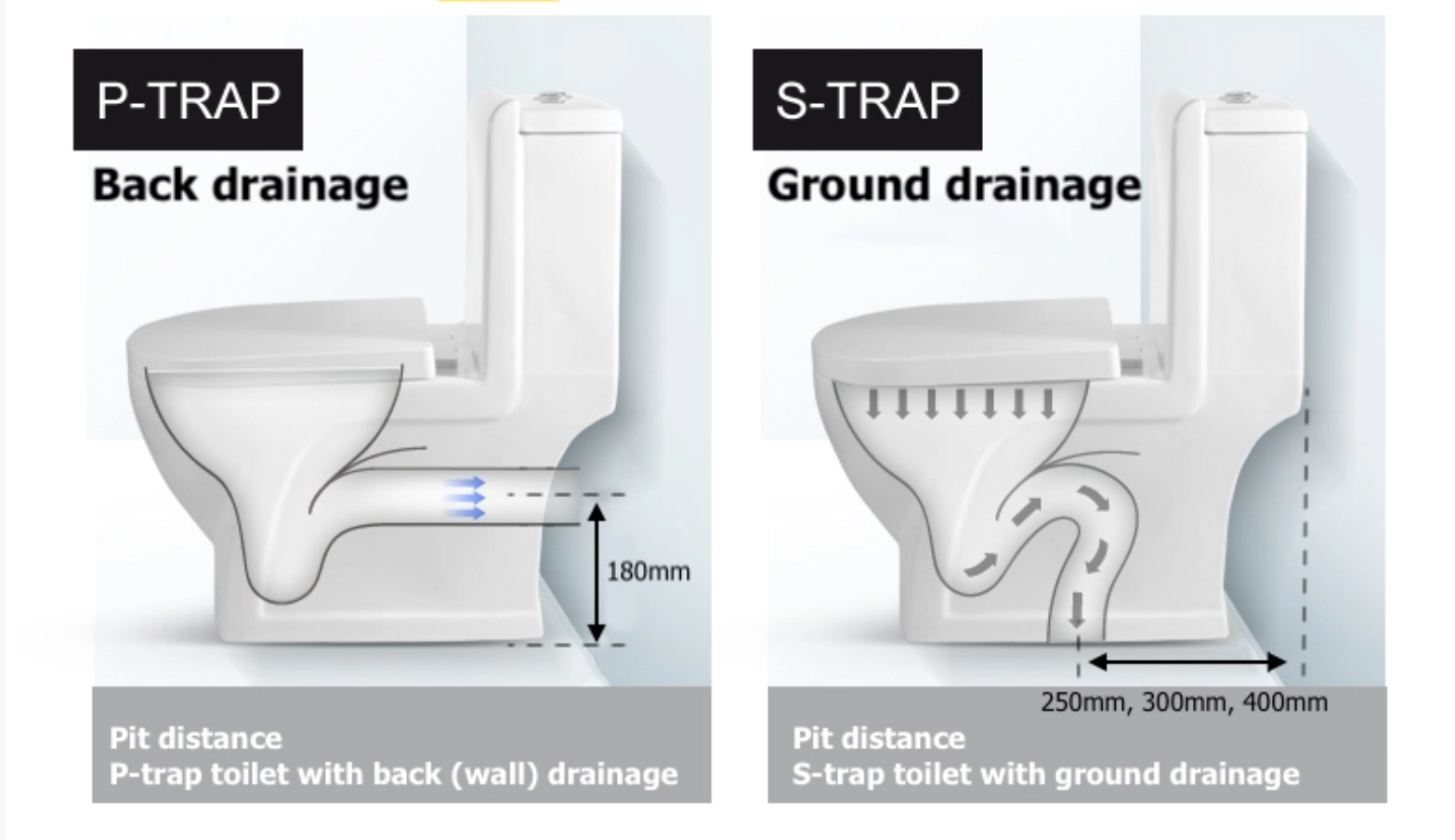






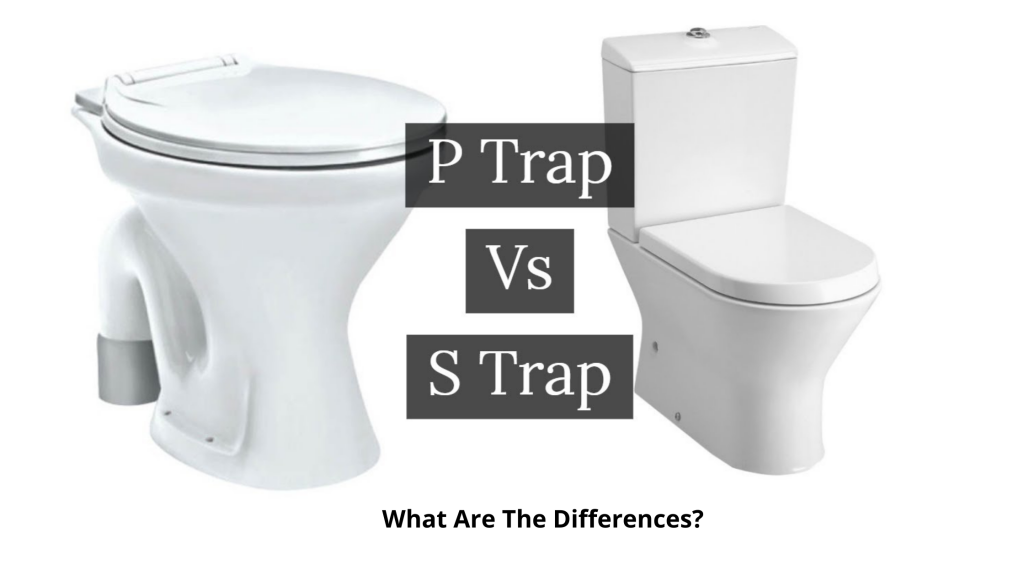

















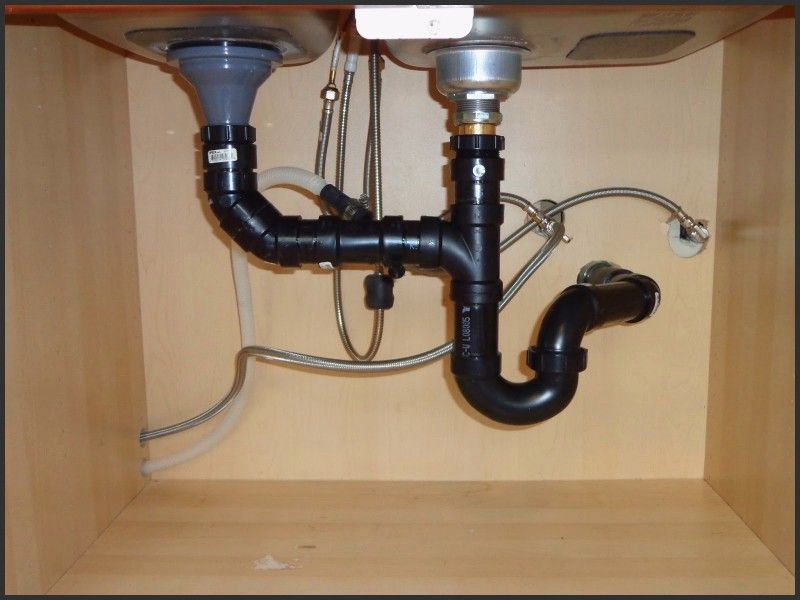


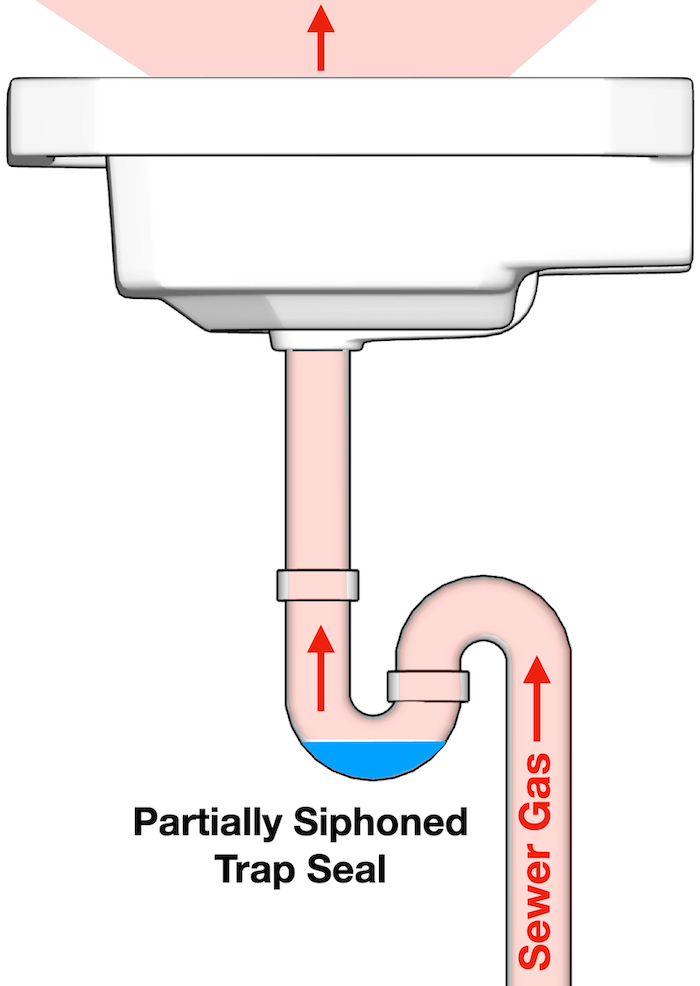

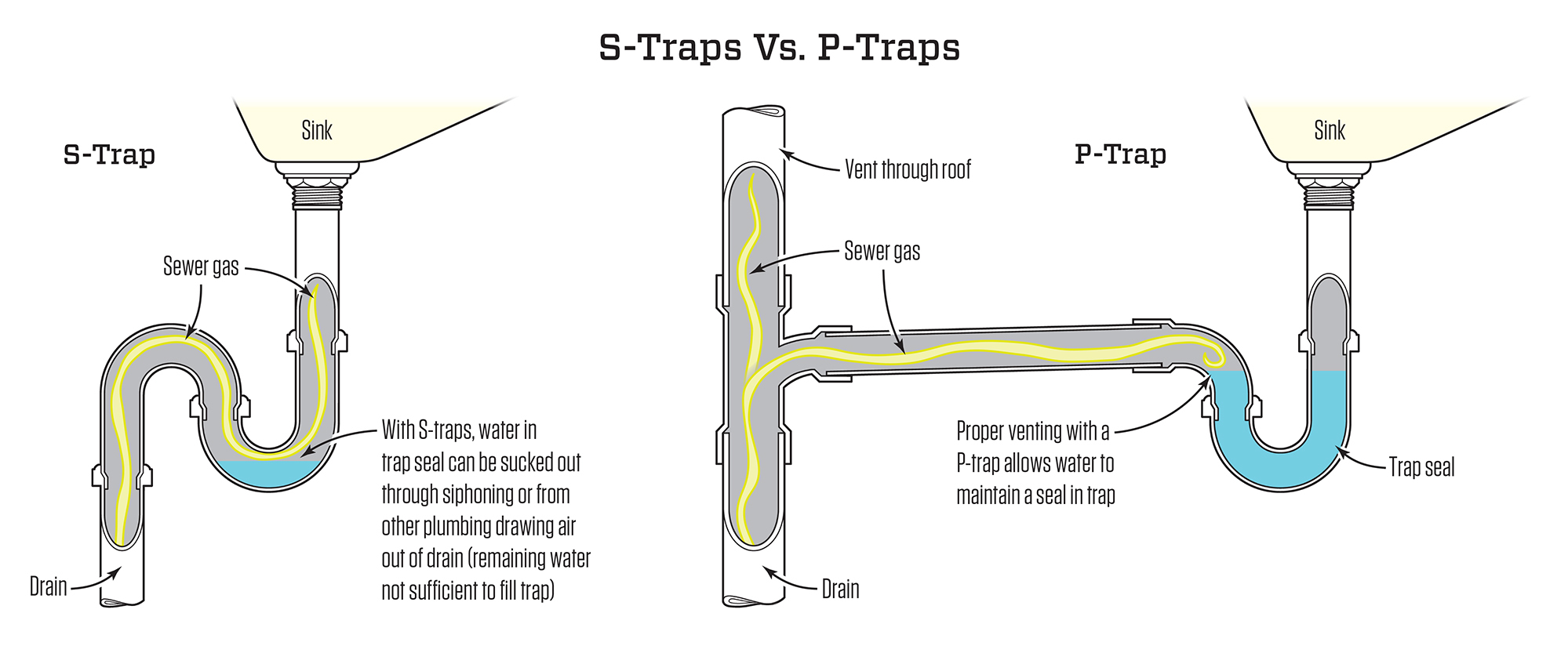




















/sink-drain-trap-185105402-5797c5f13df78ceb869154b5.jpg)















